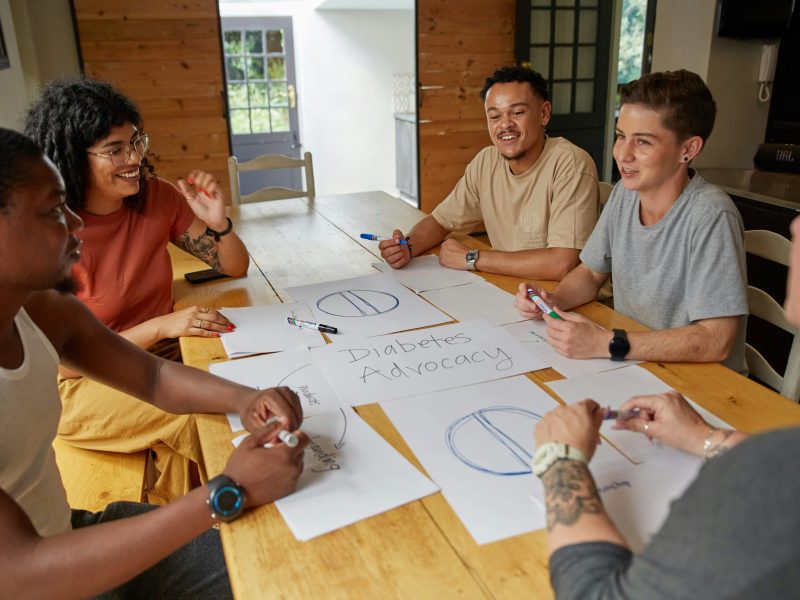Why Customer-Centric Value Creation (CCVC) Matters
In today’s fast-paced digital landscape, creating value for users isn’t just about solving problems—it’s about deeply understanding whose problems you’re solving and why.
The Customer-Centric Value Creation (CCVC) Framework, pioneered by Wolfram Nagel, offers a structured yet flexible approach to aligning product development with user needs. Unlike rigid methodologies, CCVC emphasizes adaptability, continuous learning, and cross-functional collaboration.
For UX designers, this framework bridges the gap between research and execution, ensuring solutions resonate with users while aligning with business goals. Let’s dissect its phases, compare it to established models, and explore how to implement it effectively.
The CCVC Framework: A Phased Approach
The framework, visualized in the provided diagram, comprises five interconnected phases: Initiate, Understand, Explore, Materialize, and Deliver. Each phase overlaps with the next, fostering iterative feedback loops essential for agile development.
1. Initiate: Defining the Foundation
Every project begins with clarity. The Initiate phase focuses on:
- Vision & Goals: Aligning with organizational strategy (e.g., increasing user retention by 20%).
- Scope: Outlining boundaries to avoid scope creep.
- User Identification: Defining primary users (e.g., “IT admins” vs. “casual users”) using personas.
Tip: Use tools like Miro’s Persona Template to visualize user segments.
2. Understand: Uncovering Core Needs
Here, empathy takes center stage. Techniques include:
- Job Stories: Instead of user stories, focus on situational needs (e.g., “When I need to share sensitive data, I want end-to-end encryption so I can avoid breaches”).
- Data-Driven Insights: Leverage analytics tools like Hotjar to track behavior or SurveyMonkey for direct feedback.
Key Insight: As Nagel notes, a “private user with little IT skills” has vastly different needs than an “IT admin.” Tailor research methods accordingly.
3. Explore: Ideating Solutions
This phase mirrors the “Diverge” stage of the Double Diamond Model. Activities include:
- Brainstorming Workshops: Use Crazy 8s for rapid ideation.
- Feasibility Analysis: Collaborate with developers to assess technical constraints.
4. Materialize: Building the Solution
Transition from ideas to prototypes. Key steps:
- Low-Fidelity Prototypes: Tools like Figma or Sketch help visualize concepts.
- Usability Testing: Validate assumptions with platforms like UserTesting.
5. Deliver: Launching & Promoting
A successful launch requires:
- Marketing Alignment: Derive messaging from user needs (e.g., “Built for IT admins who value security”).
- Post-Launch Metrics: Monitor KPIs like NPS or DAU (Daily Active Users) using Google Analytics.
How CCVC Compares to Other Frameworks
- Double Diamond: While both emphasize research and iteration, CCVC integrates Agile practices, making it ideal for cross-functional teams.
- Design Thinking: CCVC shares empathy-driven roots but adds structure through its Canvas (more below) and explicit ties to business strategy.
- Lean UX: Both prioritize rapid validation, but CCVC’s “Materialize” phase formalizes prototyping.

The CCVC Canvas: Your Blueprint for Success
The Canvas operationalizes the framework. Key components:
- Vision & Goals: Strategic alignment.
- Main Job & User: Defined through personas.
- Prioritized Needs: Mapped via job stories.
- Solution Brief: Guides development.
- Promotion Strategy: Tied to user pain points.
Example: Slack’s success stemmed from addressing the “main job” of reducing email overload for teams. Their Canvas might highlight goals like “Simplify team communication” and personas like “remote project managers.”
The Never-Ending Loop: Continuous Improvement
As Nagel states, “Design is never done.” CCVC thrives on:
- Feedback Loops: Regularly update job stories based on user data.
- A/B Testing: Use Optimizely to refine features.
- Retrospectives: Reflect on team performance using Retrium.
Implementing CCVC in Your Organization
- Start Small: Pilot the framework on a low-risk project.
- Train Teams: Share resources like IDEO’s Design Kit.
- Adapt Flexibly: Tweak phases to fit your workflow (e.g., merging Explore and Materialize in sprints).
Conclusion: Building Human-Centric Futures
The CCVC Framework isn’t a silver bullet—it’s a mindset. By prioritizing empathy, agility, and measurable outcomes, UX designers can craft solutions that truly resonate. As Nagel prepares to delve deeper into the CCVC Canvas in future work, stay tuned for actionable insights.

Further Reading:


